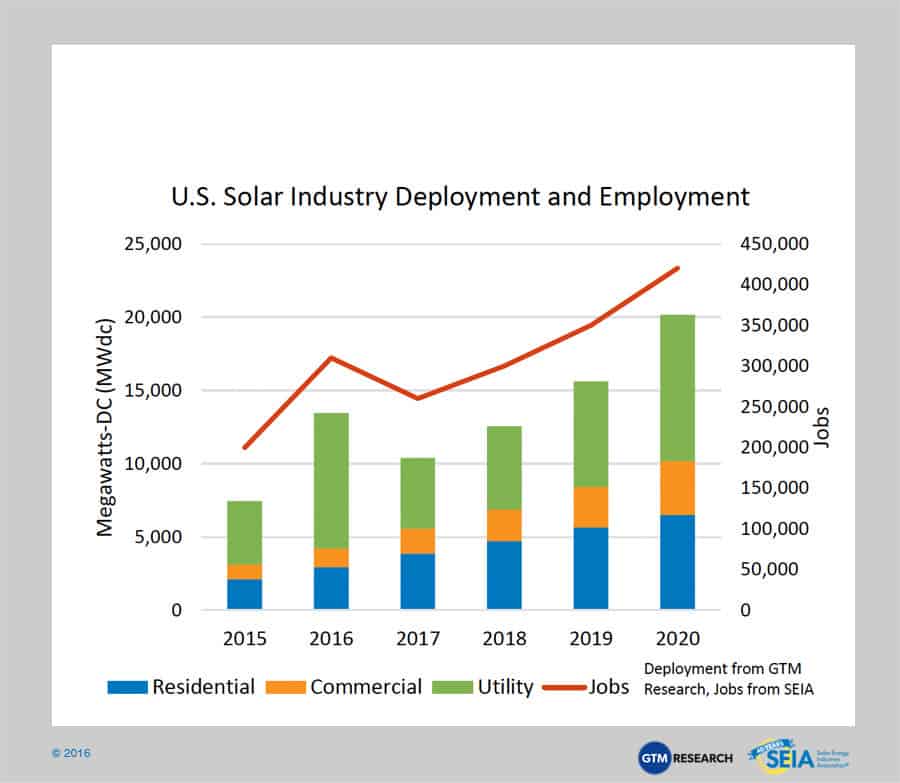2015: Why It’s Just The Beginning Of America’s Solar Boom
This year will go down as a banner year for solar energy. Â We expect new solar installations to reach a record-breaking 7.4 gigawatts (GW) by year’s end. And yet, the 2015 record is already looking like a distant memory, compared to what is to come.Â
America’s solar boom is far from busting. In fact, solar will quadruple in size from just over 24 GW of total capacity to nearly 100 GW by 2020. By that point, there will be enough solar installed to power 20 million American homes.
The more rapid growth is projected because solar companies have received and will continue to receive reliable and supportive federal policies that allow it to mature and employ hundreds of thousands of American workers and pump tens of billions of dollars in new investments into the American economy along the way.
New Solar Era
Sustained growth for one of America’s newest and most cutting-edge industries was solidified last week when Congress passed a bipartisan spending bill. This seemingly routine legislation is historic because it brings the solar industry to the forefront of the conversation about American energy.
Instead of the ITC dropping down to 10 percent for commercial users and zero for residential users at the end of 2016, Congress took action that will help solar drive America toward its clean energy future.Â
The bill included modifications to the tax code that extended both the residential and commercial sections of the solar investment tax credit (ITC). Specifically, there is a long-term extension for both residential and commercial solar users with a gradual phase down over the next five years, as well as a permanent 10 percent tax credit for commercial users.
ITC Extension and Phase Down Schedule
- 2017—30 percentÂ
- 2018—30 percentÂ
- 2019—30 percentÂ
- 2020—26 percentÂ
- 2021—22 percentÂ
- 2022 and beyond—permanent 10 percent for commercial credit
For the first time, the legislation also allows for users to claim the credit as soon as construction of their projects begin, as long as the projects are placed in service by Dec. 31, 2023.
The Industry Took Action (ITC)Â
This powerful victory would not have been possible without the industry  calling on Congress to stand with solar and the American people.
Thank you to everyone who answered our calls for action and helped #SaveTheITC. The future looks bright! pic.twitter.com/xrcxB8kjGN
— Solar Industry (@SEIA) December 21, 2015


